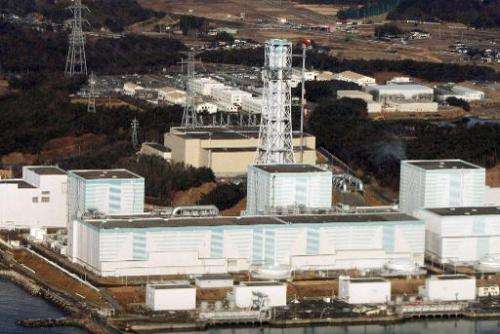Years-long 'silent quake' unleashed Fukushima tsunami

The earthquake that set off the tsunami which caused the Fukushima nuclear plant disaster was unleashed by a stealthy nine-year buildup of pressure on a plate boundary, scientists said Tuesday.
Part of a fault where two mighty plates on the Earth's crust collide east of Japan was being quietly crushed and twisted for nearly a decade, they said.
It was this hard to detect activity which caused the fault eventually to rip open on March 11, 2011 and cause the catastrophe.
The deformation "increased the stress in the source region... and finally triggered the earthquake," said study co-author Kazuki Koketsu of the University of Tokyo.
"It had an impact on the occurrence time of the earthquake," Koketsu told AFP by email. "It advanced the time (of the quake) by about one year."
The earthquake, occurring below the Pacific floor about 200 kilometres (120 miles) east of the east coast city of Sendai, was one of the biggest ever recorded, measuring 9.0 on the moment magnitude scale.
The sea bottom shifted by about 27 metres (88 feet), causing a massive tsunami that sparked the Fukushima disaster and left 18,000 people dead or missing.
The fault lies on the Japan Trench, where the Pacific plate dives beneath the North American plate on which the Japanese archipelago lies.
Subduction faults like these have been responsible for some of the world's most devastating quakes.
But they are also notoriously difficult to monitor, given that events are as rare as they are massive. Centuries may elapse between occurrences, which means the danger could be undocumented.
Koketsu and colleague Yusuke Yokota looked at data supplied by the GeoNet network of Global Positioning System (GPS) stations dotted across Japan.
They used the data to build a map of ground movement in the Tohoku and Kanto districts from March 21, 1996 to March 8, 2011—a day before a 7.3-magnitude foreshock.
The team had to strip out seismic noise from relatively smaller earthquakes nearby in order to expose the background signals—the long, agonising deformation on the Japan Trench.
The research builds on previous initiatives to harness GeoNet data, which has millimetric accuracy of land motion.
"Our paper proved that a network of GPS stations can monitor a slow event which may lead to a great subduction earthquake," said Koketsu.
But, he cautioned: "It has not yet been proven that a slow event always occurs prior to every great subduction earthquake."
The paper appears in the journal Nature Communications.
More information: Nature Communications, DOI: 10.1038/ncomms6934" target="_blank">nature.com/articles/DOI: 10.1038/ncomms6934
Journal information: Nature Communications
© 2015 AFP



















